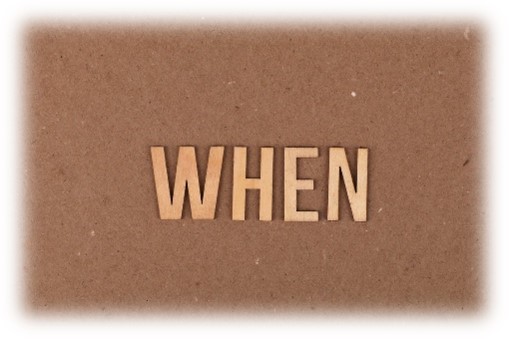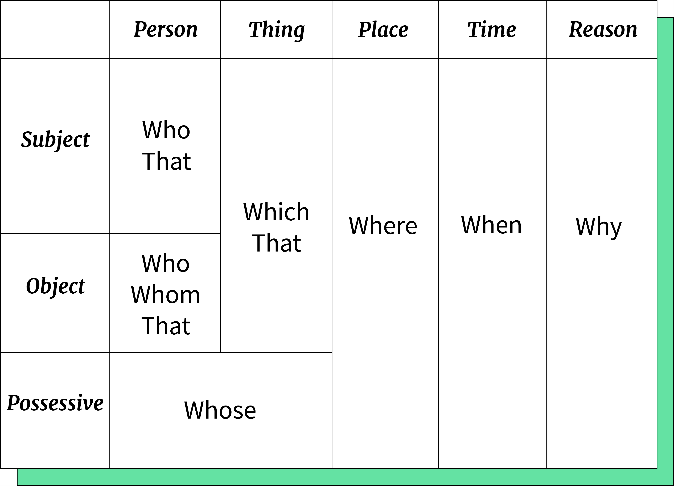


I. WHAT ARE RELATIVE CLAUSES?
Relative clauses are used to give additional information about a noun, such as a person, place or thing. Relative pronouns introduce a relative clause. They include who for people, that and which for things, when for time, and whose to show possession.
A relative adverb is an adverb that heads an adjective clause; and are: are where, when and why.
Examples:
- Where_ introduces an adjective clause describing a place.
I know the town where you live.
- When_ introduces an adjective clause describing a time.
They're talking about an era when a promise was a promise.
- Why_ introduces an adjective clause describing a reason.
It is the reason why I left.

Relative clauses belong to one of two categories: Defining relative clauses and Non-defining relative clauses.
1.1 Defining relative clauses add essential information to a sentence.
Example:
The woman who found my wallet handed it in to reception.
1.2 Non-defining relative clauses add extra information to a noun or noun phrase.
My friend’s birthday, which was last weekend, was great fun.
II. FORM
- Defining relative clauses are made with noun + relative pronoun + rest of clause.
Example:
Winter is a time when it sometimes snows.
- Non-defining relative clauses are made in the same way. An important difference, however, between both types of clause is the use of punctuation. With non-defining relative clauses, we separate the clause with commas. We cannot use that in this type of clause.
Example:
This shirt, which I bought last weekend, cost £50.
III. CONSOLIDATION.
IV. EXERCISE I.
Read the sentences and fill in the blanks with the correct word in the box below. Drag & Drop.
V. READING TEXT
Read the text and fill in the blanks with the correct word in the box below. Drag & Drop

eBay
Read the text and fill in the blanks with the correct word in the box below. Drag & Drop

VI. BIBLIOGRAPHY
Azar, B. S., Azar, D.A., & Koch R.S. (2009). Understanding and Using English Grammar. Longman.
Hewings, M. (2013) Advanced Grammar in Use with Answers: A Self-Study Reference and Practice Book for Advanced Learners of English. Cambridge University Press.
Murphy, R. (2019). English Grammar in Use. Cambridge University Press.
Swan, M. (2019) English Grammar Course Advanced. Oxford University Press.
VII. WEB RESOURCES
Image 1. https://www.pexels.com/es-es/foto/escrito-a-mano-arena-sucio-firmar-11022633/
Image 2. https://www.pexels.com/es-es/foto/arena-sucio-firmar-textura-11022639/
Image 3. https://www.pexels.com/es-es/foto/arena-firmar-textura-escritura-11022651/
Image 4. Own source
VIII. CREDITS
Elbaum, N, Sandra (2021). National Geographic Learning.
Image 5. https://www.pexels.com/es-es/foto/telefono-movil-con-signo-de-reciclaje-verde-y-bolsa-de-malla-3850512/
Image 6. https://www.pexels.com/es-es/foto/manos-mujer-oficina-internet-3944405/
Practice exercise written by Alonso Gordillo_Language Department at ENES-LEON UNAM